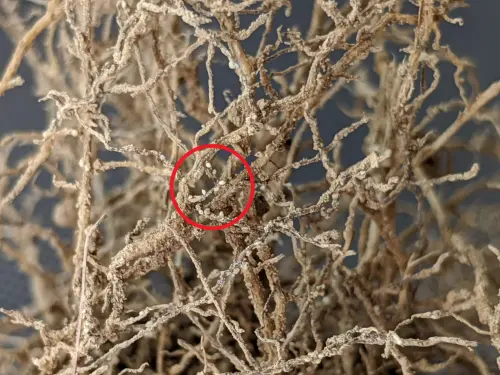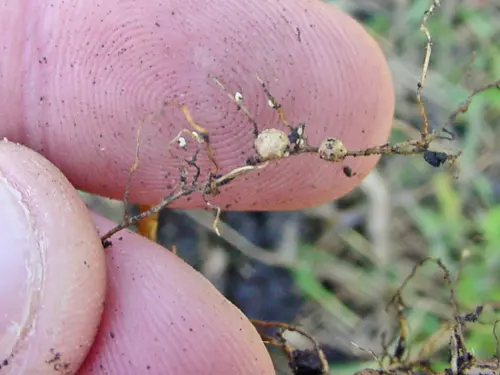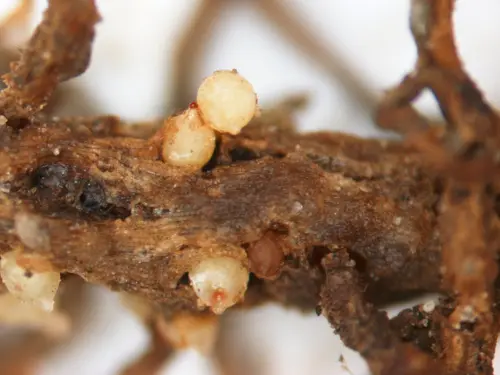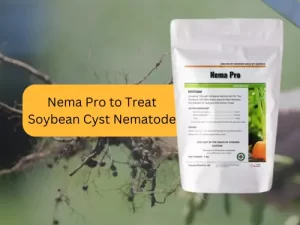Soybean cyst nematode is very dangerous, affecting the growth of soybean plants. It is a microscopic roundworm that resides near the roots of soybean plants to hamper their productivity. If you are suffering from this issue, then you should learn about integrated pest management to escape it. There are cultural and chemical practices going on around the world, but it is time to switch to sustainable processes to benefit the world.

Many of us already know about this nematode, in short (SCN), and it is not something that sounds exciting. It is a threat to soybean crops, and it is not just another round parasitic worm. It makes its home in the soil. Being in soil, it quickly targets the roots of soybean plants. It causes huge economic losses by hampering the growth of the plant, reducing yield, and obviously hampering the crop quality. If you are curious, well, it is known as Heterodera glycines as far as its scientific name is concerned.
This infestation is usually dangerous. The affected plants may show a few above-ground symptoms such as stunted growth, yellowing of foliage and a few other regular symptoms. These symptoms can easily be mistaken for other minor issues while this infestation grows to become dangerous. If you check closely, protective structures are usually formed by the female nematodes during their life cycle. You can closely find them on the roots to catch this nematode problem.
The life cycle of this cyst nematode varies usually from several weeks to months very easily. It usually undergoes several developmental stages, including egg, juvenile, and adult stages. Female nematodes are quite horrible as they enter the roots of soybeans easily to make it their feeding place. They extract the required nutrients from the plant. It affects the quality and productivity of the soybean plant very easily.

Usually, to identify if there is a soybean cyst nematode symptoms and problem, you need to do multiple things together. From a professional’s point of view, if you want to check, then you need to do field scouting and laboratory analysis and have some knowledge of the characteristic symptoms associated with this horrible cyst nematode infestation. You need to add up symptom monitoring and yield mapping, too, if you want to get accurate results. Knowing accurately about this disease is necessary if you want to avoid further damage this disease can do to your soybean plantation.
The frequency of this dangerous nematode testing depends on many issues. If there is a presence of this cyst nematode in the region, cropping history, and management practices since ages, then you should be having a headache. Always prefer to test for this particular cyst nematode every three to four years so that you keep soil safe and get good production of soybean easily.
Regular soil sampling and testing is necessary. It is preferable to do cyst nematode infestations and provide valuable data for implementing effective management strategies. In regions where this particular nematode has been previously identified, the soil is always in problem. Prefer to check as frequently as possible and keep treating the soil consistently.

The organic method to treat this dangerous nematode is very good if you look at the long-term option. First, know the soybean cyst nematode symptoms. After that you can look out for control methods.
Chemical management of this coalition is very necessary for soybean cyst nematode control. Know the methods to have this particular nematode in control. It involves the use of nematicides or soil-applied chemicals to reduce nematode populations. It can easily handle crop damage.
Chemical treatments are commonly used in conventional agriculture. Chemical methods are good for the short term but not for the long term as environmental issues arise. Organic agriculture is usually preferred due to environmental and health concerns. Still, if you want a chemical solution and if it is necessary, the following methods are employed:
Companies like Novobac are quite concerned about environmental issues, and that is why it has come up with Nema Pro, which is an amazing organic nematicide. It is helpful in controlling the parasitic nematodes, including the ones that attack soybean crops. It has a great active ingredient called Paecilomyces lilacinus. This targets the nematodes that harm the plants without attacking the beneficial insects. It can be used as an organic spray and controls harmful nematodes.

Treatment for soybean cyst nematode solutions is Nema Pro. It is seen as a breakthrough product for soybean cyst nematode control. It not only attacks the eggs, juveniles, and adult root knot nematodes but also promotes strengthening of the roots and their growth. Novobac is the best nematicide products manufacturer if you are looking for root knot nematode control. This nematicide does not only target root knot disease but also dagger, stunt, leison, cyst, and ring. Apply 3 to 4.5 kg of Nema Pro with its active ingredient Paecilomyces Iilacinus to get the best results. It depends on the plantation population too. You should reapply every 28 days in the planting season for the best results.
Nema Pro fungicide is also effective for root knot nematode. You can check our blog by clicking on the link.
Novobac with Nema Pro has come up with the best solution to control soybean cyst nematode damage. Paecilomyces lilacinus is the active ingredient that helps to fight this horrible disease without hampering the environment. If you are looking for sustainable growth without affecting the soil and surrounding, then you should try out this amazing product from Novobac.
As a plantation owner, I face quite a few..
The banana weevil, also known as Cosmopolites sordidus, is..
Fusarium wilt in banana is usually known to be..

Leave a Reply